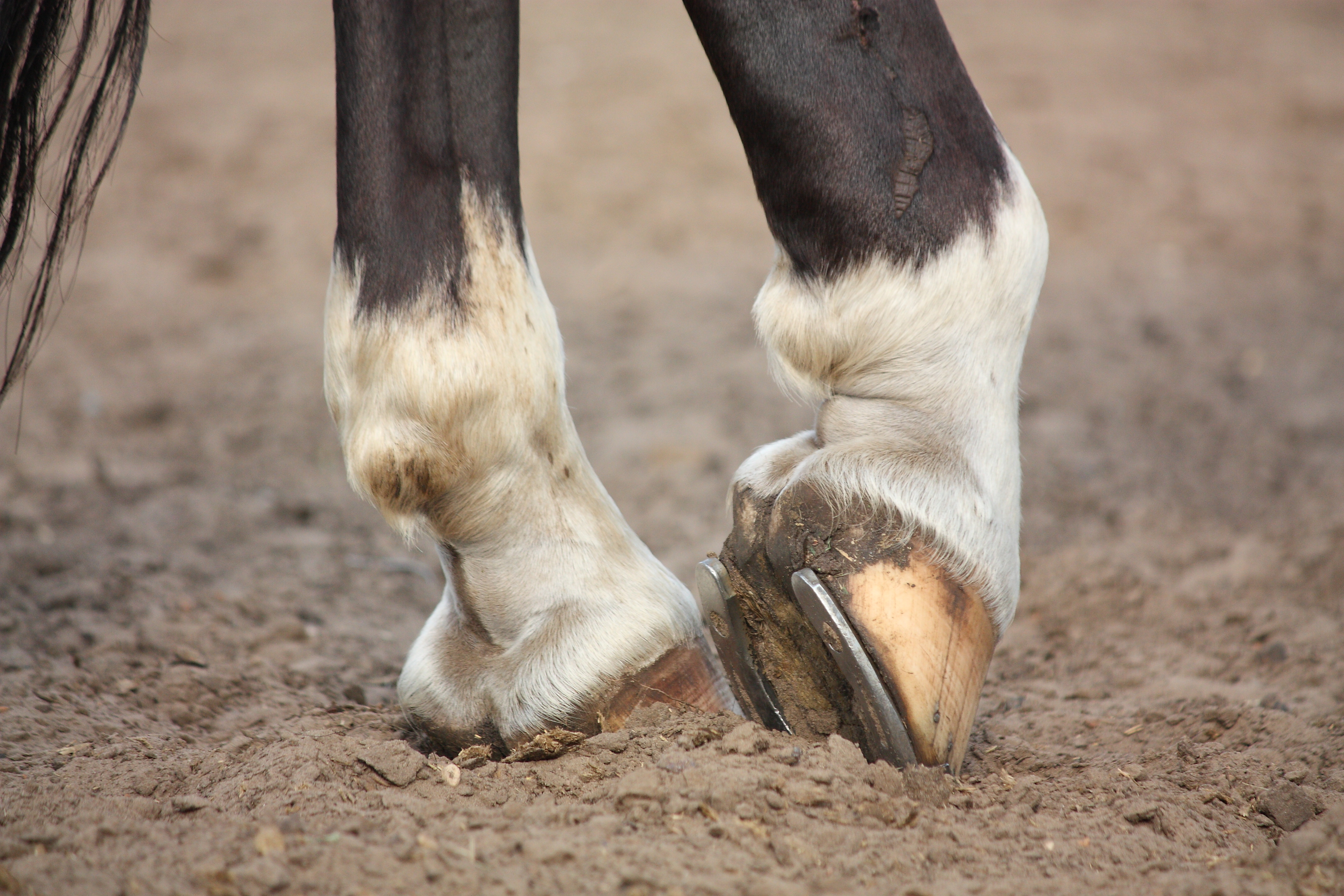Built for Ringbone or Sidebone?
- August 15, 2022
- ⎯ Equus
That some breeds and types of horses (Thoroughbreds, most notably) appear practically immune to ringbone and sidebone, and other breeds and types (drafts and warmbloods, for instance) have more than their share of pastern bulges would seem to indicate an inheritable condition.
But the prevailing wisdom sees the heritability in terms of conformational predisposition, not direct genetic cause and effect. In other words, certain limb constructions concentrate strain on the pastern, and, given a little encouragement by occupation or inappropriate farriery, inflammation and tissue changes eventually happen.

The following conformational shortcomings put the lower limb at risk:
- Upright pasterns increase concussion experienced by the pastern joint, raising the possibility of high ringbone.
- High heels and short toes, especially in conjunction with a “choppy” gait, encourage low ringbone by stressing the extensor tendon and suspensory attachments at the front of the foot.
- In toed-in or toed-out legs, the joints, soft-tissue attachments and collateral cartilages are stressed unequally, contributing to sidebone on one quarter, “true” ringbone on the overstressed aspect of the joint and periarticular ringbone where tendon and ligament anchors pull at their insertions into the bone. Toeing in or out and being base narrow or base wide are the variations to beware of.
- Faulty joint design, in which the surfaces of the long and short pastern bones don’t correspond precisely to each other or the central ridge of the short pastern bone is too low, has been described as a contributor to ringbone. The imperfect or insecure matching of the two bone ends allows excessive wear of the phalangeal joint surfaces.
Most cases of sidebone and ringbone occur in the forelegs, where concussive and weight-bearing forces take special advantage of a compromised pastern and where even accidental blows seem to occur more often. However, high ringbone occasionally shows up in the hind pasterns of horses under age 3, an expression of the same developmental orthopedic disease (DOD) that more commonly produces osteochondrosis in the stifle or hock joints. In these cases, nurture, in the form of diet, plays a big part, but genetics also may be a factor.
Don’t miss out! With the free weekly EQUUS newsletter, you’ll get the latest horse health information delivered right to your in basket! If you’re not already receiving the EQUUS newsletter, click here to sign up. It’s *free*!





